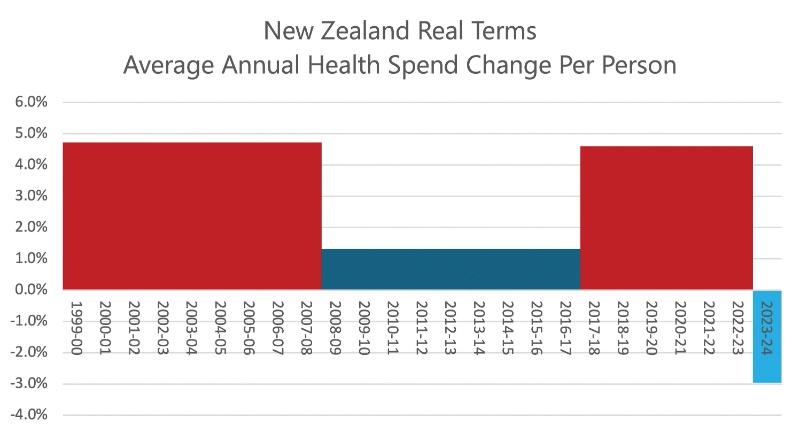Flood Protection In Bay Of Plenty Gets A Boost In Budget 2024
An approximate $20M co-investment to help improve flood resilience for communities across the Bay of Plenty was a welcome announcement in yesterday’s Budget 2024, says Toi Moana Bay of Plenty Regional Council chair Doug Leeder.
As part of the Budget 2024, the coalition Government outlined plans for the Regional Infrastructure Fund to support regional productivity, prosperity and resilience. This fund, $1.2 billion over three years, will invest in new and existing infrastructure across regional New Zealand.
Among the first projects to be funded through this will be flood protection and resilience projects, with an initial $200 million allocated, of which up to $101.1 million is committed to 42 projects nationally.
The co-investment, which will be administered through Kānoa - Regional Economic Development and Investment Unit, will support Regional Council in its delivery of flood protection infrastructure projects across three of its five rivers and drainage schemes.
This includes future stages of Project Future Proof, a multi-stage project to rebuild the flood defences in Whakatāne city centre, improving and replacing flood infrastructure in the lower Kaituna River, and upgrading stopbanks around Ōpōtiki.
Chair Leeder says the co-investment recognises how critical infrastructure can help protect lives and livelihoods across the region.
“Flooding is the most common natural hazard in Aotearoa, with a major flood event occurring on average every eight months. This is only set to increase with the effects of a changing climate.
“Most of New Zealand’s flood infrastructure was not built for the scale or intensity of the weather events we are seeing today or will see in the future, which is why we need to act now.
“Flood protection plays a key role in not just protecting people, but also reducing the risk on high-value businesses, productive land, transport routes and critical services in a flood event. The cost of doing nothing – economically, socially and culturally – is significantly more than upfront investment.”
This co-investment builds on the existing joint Resilient River Communities programme between regional and unitary councils and Kānoa, where post-Covid recovery funding has helped alleviate increasing costs to ratepayers since it began in 2020.
Chair Leeder says this latest round of co-investment is expected to do the same.
“Flood infrastructure and protection schemes require regular maintenance and management to be fit for purpose. Around the country, these schemes are the responsibility of regional councils and unitary authorities, and are funded through general and targeted rates.
“This is an unsustainable funding model, which is why we look to Central Government to come on board as a co-investment partner for our major works.”
Regional Council has recently completed deliberations on its Long Term Plan. Due to the timing of the Budget 2024 announcement, the implications on Regional Council rates are currently being worked through and will be available publicly once the Long Term Plan is adopted on 26 June.


 Gordon Campbell: On The Americanising Of NZ’s Public Health System
Gordon Campbell: On The Americanising Of NZ’s Public Health System Rio Tinto & NZAS: Archaeological Project Underway From Historic Excavations At Tiwai Point
Rio Tinto & NZAS: Archaeological Project Underway From Historic Excavations At Tiwai Point New Zealand Deerstalkers Association: NZDA Urges Hunters To Prioritise Safety This Roar Season
New Zealand Deerstalkers Association: NZDA Urges Hunters To Prioritise Safety This Roar Season PSA: 1000 Days Since Landmark Pay Equity Deal Expired - Workers Losing $145 A Week
PSA: 1000 Days Since Landmark Pay Equity Deal Expired - Workers Losing $145 A Week Grace Tinetali-Fiavaai, RNZ: Widow Of Fa'anānā Efeso Collins Seeks Inquiry Into His Death - 'Unanswered Questions'
Grace Tinetali-Fiavaai, RNZ: Widow Of Fa'anānā Efeso Collins Seeks Inquiry Into His Death - 'Unanswered Questions' Te Pāti Māori: Te Pāti Māori Call For Mandatory Police Body Cameras
Te Pāti Māori: Te Pāti Māori Call For Mandatory Police Body Cameras NZ First Party: NZ First Introduces the “Conscience Acts Referendums Bill”
NZ First Party: NZ First Introduces the “Conscience Acts Referendums Bill”


